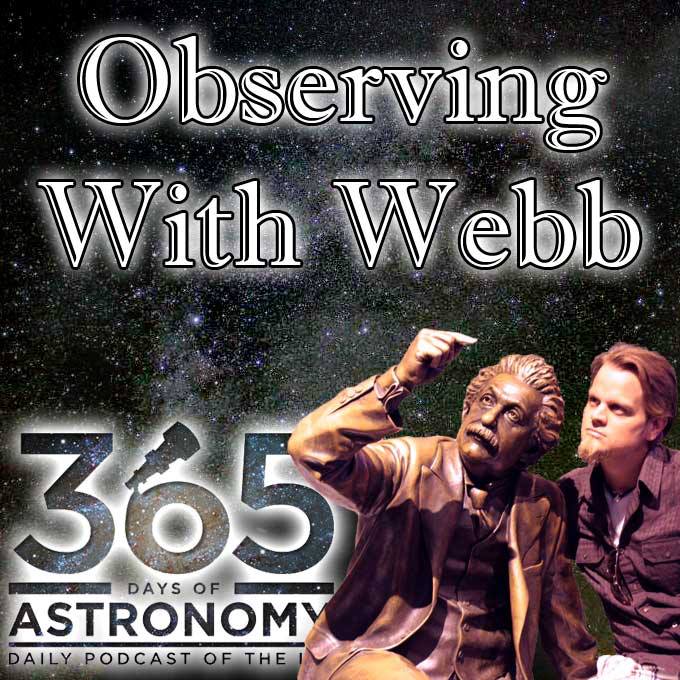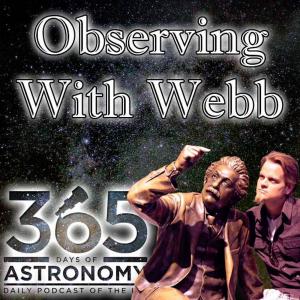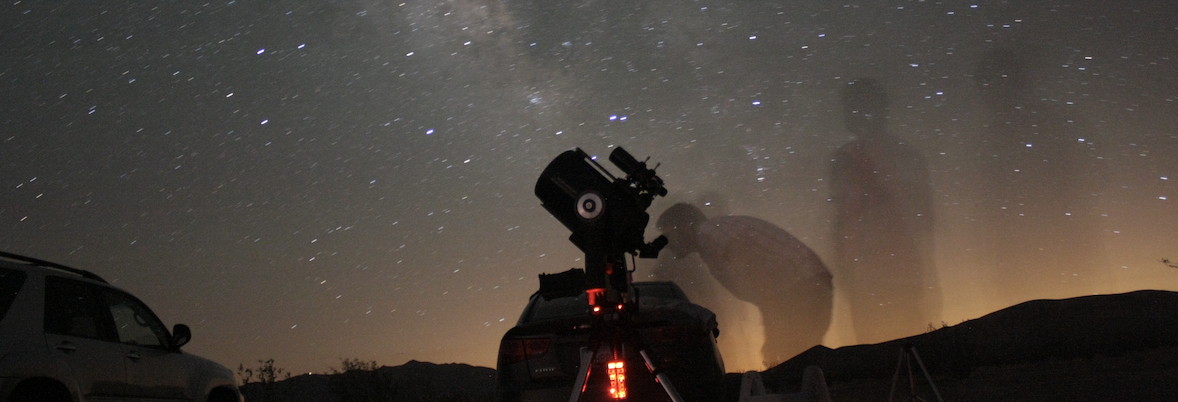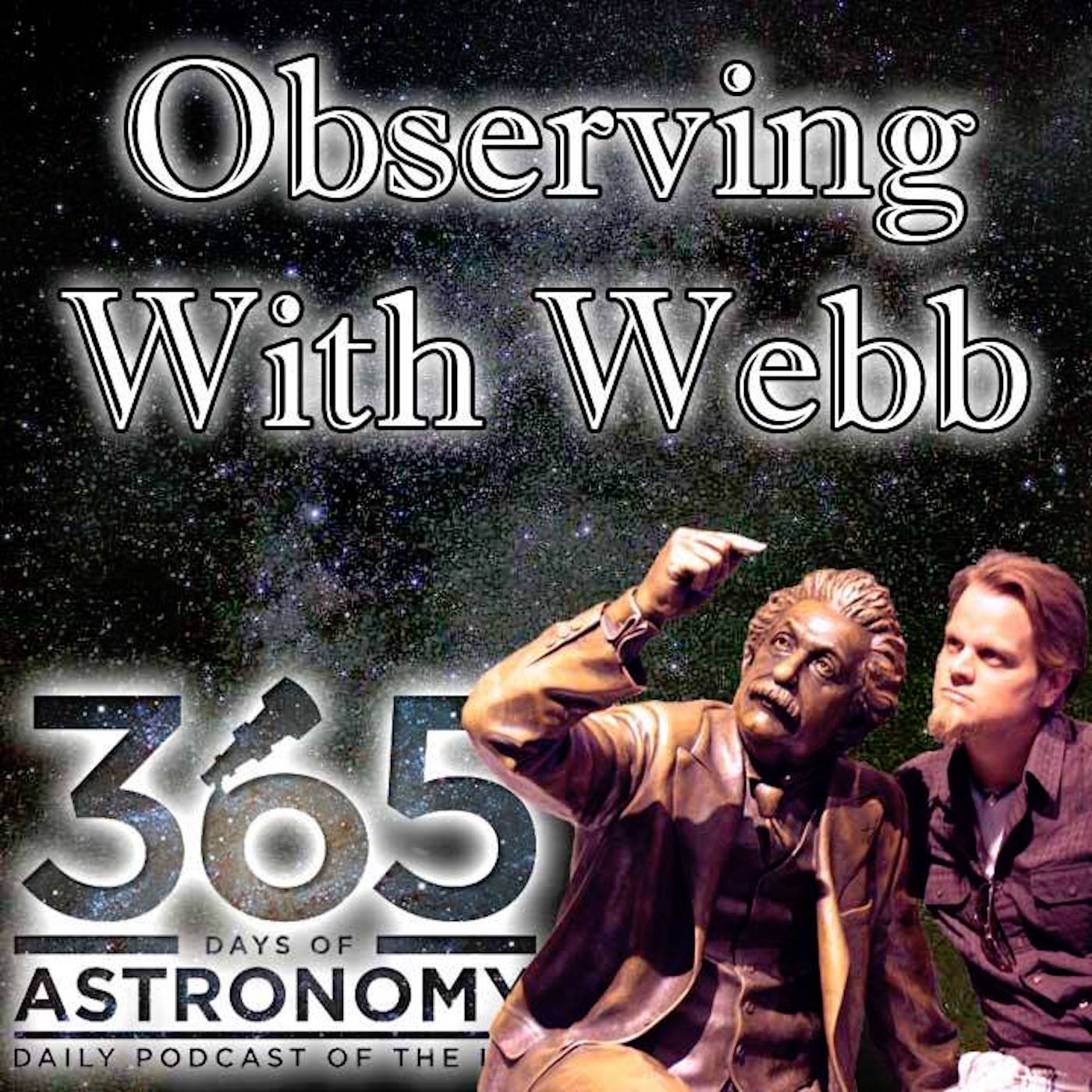Episodes

Saturday Apr 05, 2014
April 2014
Saturday Apr 05, 2014
Saturday Apr 05, 2014
To see a video of this information (<10 min long) go to my YouTube Channel here
April brings us some shorter, but warmer nights without snow…I assume. The best part of April is the total lunar eclipse on the night of the 14th into the morning of the 15th. This is actually part of a tetrad of eclipses that happen about 6 months apart. More details on that here.
PLANETS...well, the ones visible with your naked eye
Planets you can see around Sunset – Jupiter (SW), Mars (E)
Planets you can see throughout the night – Jupiter (SWàNW), Mars (EàSàW)
Planets you can see in the Morning – Mars (W), Saturn (SW), Venus (E)
Mercury – In the Sun’s glare.
Venus – Venus will be very bright again this month in the morning toward the East. It rises pretty much after 5:00am and is about 20˚ above the horizon by sunrise. Closest to the Moon on the 25th.
MARS – This is a wonderful time to try to take a look at Mars. The Earth is lapping Mars in the race around the Sun, and thus we are closer to Mars now than any other month this year. Look in the East after sunset, in the West around sunrise and look for the visibly red “star”. Or get out your telescope and see if you can find some of the surface features. It’s hanging out in Virgo this month. Close to the Moon on the 13th and 14th.
JUPITER – Jupiter is out until about 1am. Look SW after sunset for the brightest “star” currently in the middle of Gemini. It’ll move toward the West by sunrise. Close to the Moon on the 6th.
Saturn – Look low in the East after 10pm for the bright point that is Saturn, which rises and moves to the SW by sunrise. Closest to the Moon on the 16th. Try taking out your binoculars or telescope to find the rings at its side.
EVENTS...
6th – Close Encounter – Moon & Jupiter – Find the almost First Quater Moon in the Southwest in the evening. Jupiter will be 5˚ up and to the right.
First Quarter Moon – 7th (Visible until midnight)
13th & 14th – Close Encounter – Mars, Moon – Get out after 10pm and check out the almost Full Moon in the SE. Mars will be about 8˚ to the left of it on the 13th, and 8˚ above it on the 14th.
TOTAL LUNAR ECLIPSE – Haven’t had one of these since 2011, and we’ll be getting a bunch more soon. Three more in the next year and a half! You’ll start seeing the partial eclipse start at 1:58am on the morning of April 15th. The shadow will keep eating away until 3:07am when the moon enters totality. Totality lasts until 4:25am (max eclipse at 3:46). The moon will then slowly exit the Earth’s shadow until 5:33am. More information here.
Full Moon – 15th (Visible all night) – With eclipse this time around.
16th – Close Encounter – Moon, Saturn – Look to the SE after 11pm and you can see a Gibbous Moon, with Saturn about 1˚ above it. A very close pair this month.
Last Quarter Moon – 22nd (Visible from midnight into the morning) – Also, the Lyrid meteor shower peaks, but the Moon and the general lack of meteors compared to other showers makes this a night to only go out for a few minutes, as opposed to dropping everything and making plans.
25th & 26th – Close Encounter – Moon, Venus – Before sunrise, look to the East and find a VERY thin crescent Moon. Venus will be about 6˚ to the left and below the Moon on the 25th and about 8˚ to the right of the Moon on the 26th, making a very nice morning pair worthy of a picture.
27th – Solar Eclipse if you live in Australia, Indonesia, or Antarctica.
New Moon – 29th (darkest skies)
CONSTELLATIONS... (see sky map link at the bottom for a Star Map for this month – or ask Mr. Webb) Look straight up and you'll see...
After Sunset (sunset is around 7:30-8:00pm) – Cancer, Leo, Lynx, Ursa Major’s legs - Extra Challenge! Find M44 in the middle of Cancer – an open cluster of stars also known as the Beehive Cluster. You may be able to see it as a small fuzzy patch with your naked eye if you have very dark skies. However with a pair of binoculars or a telescope on low power, it will look like a hive of bees in the distance, hence its nickname.
Between Sunset and Midnight – Leo, Leo Minor, Ursa Major’s legs
Midnight – Canes Venatici, Coma Berenices are closer to the Zenith (the point straight above you), but Ursa Major, Leo, and Bootes make a nice but bigger triangle around it.
Early Morning – Hercules, Lyra, Cygnus – These are the Summer constellations, and since they are starting to rise in the morning now, that means that summer is on its way.
GENERAL CONSTELLATION FINDING TIPS:
Winter constellations: Orion is still easy to spot as he is directly in the SW after sunset. You can use Orion to find many other winter constellations, for the last time until the fall.
Using Orion: Find Orion by looking for the three stars in a row that make up Orion’s belt in the Southwest. If you draw a line from the left star to the right star and keep going right about 20 degrees (about 2 fists at arm’s length) until you reach another very bright star, you will have reached the star Aldebaran in Taurus (the V). Follow that line a little more (about another fist) and you’ll find the Pleiades.
If you start at his belt again, but instead go the opposite way and draw a line from the right star in Orion’s belt to the left star, and keep going left about 20 degrees (2 fists again), you’ll come to the brightest star in the sky – Sirius – part of Canis Major.
Above these three constellations are Gemini and Auriga. The brightest stars in each of these constellations form a circle in the sky. Going clockwise - Aldebaron (Taurus) – Rigel (Orion – bottom right foot) – Sirius (Canis Major) – Procyon (Canis Minor) – Castor & Pollux (Gemini) – Capella (Auriga). It makes for great stargazing in the winter sky.
Use a sky map from www.skymaps.com to help you out.

Tuesday Feb 25, 2014
March 2014
Tuesday Feb 25, 2014
Tuesday Feb 25, 2014
To see a video of this information (<10 min long) go to my YouTube Channel here
March is relatively low key, with Jupiter visible almost all night, along with appearances from Mars, Saturn, and Venus, and some close encounters with the Moon.
PLANETS...well, the ones visible with your naked eye
Planets you can see around Sunset – Jupiter (SE)
Planets you can see throughout the night – Jupiter (SEàSàNW), Mars (SEàSàSW)
Planets you can see in the Morning – Mars (SW), Saturn (S), Venus (SE)
Mercury – Might be able to find it in the East in the morning, low on the horizon, until the 18th.
Venus – Venus will be very bright again this month in the morning toward the Southeast. It rises pretty much after 5:30am and is about 20˚ above the horizon by sunrise. Closest to the Moon on the 27th.
Mars – Look in the SE after 10pm, in the SW around sunrise. It’s hanging out in Virgo this month, close to Spica – Virgo’s brightest star. Close to the Moon on the 18th.
JUPITER – Jupiter is out until about 3am. Look East after sunset for the brightest “star” currently in the middle of Gemini. It’ll move toward the South and eventually set in the West before sunrise. Close to the Moon on the 9th.
Saturn – Look low in the Southeast after 1am for the bright point that is Saturn, which rises and moves to the South by sunrise. Closest to the Moon on the 21st. Try taking out your binoculars or telescope to find the rings at its side.
EVENTS...
New Moon – 1st (darkest skies)
First Quarter Moon – 8th (Visible until midnight)
9th – Close Encounter – Moon & Jupiter – Find the Gibbous Moon in the South/Southwest in the evening. Jupiter will be 7˚ up and to the left. The next night the Moon will be on the opposite side
9th – Daylight Savings Time starts at 2am. Spring forward.
Full Moon – 16th (Visible all night)
18th & 19th – Close Encounter – Mars, Moon – Get out after 10pm and check out the Gibbous Moon in the SE. Mars will be about 3˚ above it, making a nice triangle with the Moon and Spica – the brightest star in Virgo.
20th - Spring Equinox - Astronomically the first day of Spring, even though meteorologically Spring starts in the beginning of March. Here’s some more info.
21st – Close Encounter – Moon, Saturn – Look to the SE after midnight and you can see a Gibbous Moon, with Saturn about 3˚ above it.
Last Quarter Moon – 23rd (Visible from midnight into the morning)
27th – Close Encounter – Moon, Venus – Before sunrise, look to the Southeast and find a VERY thin crescent Moon. Venus will be about 3˚ to the right of the Moon, making a very nice morning pair worthy of a picture. You might be able to see them as early as 5:30am.
New Moon – 30th (darkest skies)
CONSTELLATIONS... (see sky map link at the bottom for a Star Map for this month – or ask Mr. Webb) Look straight up and you'll see...
After Sunset (sunset is around 5:30-6:30pm) – Auriga (Taurus is right nearby), Gemini
Between Sunset and Midnight – Cancer, Gemini, Lynx, and Leo later in the month - Extra Challenge! Find M44 in the Middle of Cancer – an open cluster of stars also known as the Beehive Cluster. You may be able to see it as a small fuzzy patch with your naked eye if you have very dark skies. However with a pair of binoculars or a telescope on low power, it will look like a hive of bees in the distance, hence its nickname.
Midnight – Leo, Leo Minor, Ursa Major’s legs
Early Morning – Corona Borealis, Hercules, Boötes (you can also find the Big Dipper’s handle, and starting from the inside of the handle, follow the arc that those four stars make past the last star in the handle about 30˚ or three fist-widths to the next very bright star you find which is Arcturus, the base of the constellation Boötes. Hence astronomers use the phrase “Follow the Arc to Arcturus”)
GENERAL CONSTELLATION FINDING TIPS:
Winter constellations: Orion is easy to spot as he is high in the south as the Sun sets. You can use Orion to find many other winter constellations.
Using Orion: Find Orion by looking for the three stars in a row that make up Orion’s belt in the South after 7pm. If you draw a line from the left star to the right star and keep going right about 20 degrees (about 2 fists at arm’s length) until you reach another very bright star, you will have reached the star Aldebaron in Taurus (the V). Follow that line a little more (about another fist) and you’ll find the Pleiades.
If you start at his belt again, but instead go the opposite way and draw a line from the right star in Orion’s belt to the left star, and keep going left about 20 degrees (2 fists again), you’ll come to the brightest star in the sky – Sirius – part of Canis Major.
Above these three constellations are Gemini and Auriga. The brightest stars in each of these constellations form a circle in the sky. Going clockwise - Aldebaron (Taurus) – Rigel (Orion – bottom right foot) – Sirius (Canis Major) – Procyon (Canis Minor) – Castor & Pollux (Gemini) – Capella (Auriga). It makes for great stargazing in the winter sky.
Use a sky map from www.skymaps.com to help you out.

